Yuri Gagarin: the hidden dangers in the first manned flight to space 60 years ago
Yuri Gagarin was the first person to reach space
In his small ship, just over six feet in diameter, Yuri Gagarin (1934-1968) set out on the journey that would be the first of a human being to outer space.
Gagarin was more like a passenger than a cosmonaut. At that time, the "pilot" was unable to even touch the ship's controls.
According to a transcript of the communication with the ground control, Gagarin was impressed by the view from the capsule window, mentioning the "beautiful aura" of our planet and the surprising shadows cast by clouds on the Earth's surface.
Gagarin's trip to space on April 12, 1961, exactly 60 years ago, was a victory for the extinct Soviet Union (USSR) over the United States in the space race. And his return to Earth was an undeniable triumph.
But to make history, Gagarin faced a dangerous challenge that required immense courage.
He left for space, a mysterious and virtually unknown place at the time, in a ship that had no rescue controls.
At the time, no one trusted the safety of rockets, spaceships, controls and communication systems, or even that humans could survive in space.
At the age of 27, Gagarin accepted the challenge of traveling to space
"If the Vostok spacecraft were presented to scientists today, no one would agree to release something as improvised space," says Boris Chertok engineer nearly half a century after the mission in his book Rockets and People (Rocket and People, in free translation into Portuguese).
"[At that time] I signed documents stating that everything seemed fine and that it guaranteed the mission's safety. I would never have signed this today. I gained a lot of experience and realized how much we are at risk," he adds.
Failures
The Vostok launch vehicle, on which the spacecraft of the same name was installed, was based on the R-7 rocket, a two-stage ICBM (intercontinental ballistic missile) launched for the first time in August 1957.
That same year, Sputnik 1, the first artificial terrestrial satellite, was transported on the R-7.
The rocket design was very successful - the missiles of this family remain the only ones in Russia for manned space flights. Although outdated, it has proven to be reliable for placing spacecraft in orbit.
However, in 1961, things were quite different.
Rocket R-7 was created for ballistic purposes, but adapted for space exploration
"By modern rocket safety standards, we had no reason to be optimistic before 1961. We had at least eight consecutive launches that year," said Chertok in his book.
"[But] of the five satellite launches in 1960, four managed to take off. Of these, only three managed to get out of Earth's orbit and only two landed. And of the two that returned to Earth, only one landed normally."
The first launch of the Vostok program was on May 15, 1960, less than a year before Gagarin's mission. On board the satellite ship was a doll nicknamed Ivan Ivanovich.
The spacecraft left Earth's orbit, but did not return. Their guidance systems have failed.
On August 19, the dogs Belka and Strelka flew into space and returned, in what was the only successful launch in 1960.
Subsequent attempts were less successful.
Small ship that Gagarin traveled on was about two meters in diameter
On December 1, another launch, also carrying dogs, Mushka and Pchelka, failed to return on its calculated trajectory and began to descend outside the borders of the USSR.
The entire ship was destroyed, with the animals on board, to prevent other countries from obtaining Soviet technology.
'Almost perfect'
During Gagarin's flight on April 12, 1961, the rocket worked almost perfectly. But there are no trifles in space technology and this "almost" could have cost the Russian cosmonaut his life.
Among many technical failures, his spacecraft entered orbit at a higher than expected altitude.
It had brakes, but if they didn't work, Gagarin would have to wait for the spacecraft to descend on its own before returning to Earth.
Although Vostok had oxygen, food and water for more than a week, the altitude it reached would take the ship longer to start descending.
Gagarin probably would have run out of supplies and died. Fortunately, the brakes worked.
Monuments to Gagarin remain in Russia today
So, the cables that connect the space capsule to the service module were not separated before Gagarin's return to Earth. Thus, the Gagarin capsule unexpectedly dragged an additional module when it landed.
The temperatures in the capsule became dangerously high and Gagarin spun around frantically, almost losing consciousness.
"I was in a cloud of fire falling towards Earth," recalled the cosmonaut later. It took 10 minutes before the cables finally burned and the descent module, which contained its human passenger, was released.
Gagarin jumped before his capsule hit the ground, parachuting to a safe landing near the Volga River.
This violated the requirement of the International Aeronautical Federation (FAI) that astronauts and cosmonauts must land on the spacecraft; otherwise, the flight into space does not count.
Authorities refused to admit that Gagarin did not travel the last few kilometers to the ground on his ship.
Its space flight records were certified by FAI, which also changed its rules to recognize that the important steps were safe launch, its passage through orbit and the return of the pilot.
Would a modern cosmonaut do that?
The BBC's Russian service asked three Russian cosmonauts if they would fly into space on the Vostok spacecraft in the state it was in 1961.
Pavel Vinogradov, who traveled to space three times in 1997, 2006 and 2016, said he would fly despite all the danger, but only because of his adventurous nature.
Gagarin became a Soviet national hero after his mission was successful
However, Gagarin was in a different position, he says, and it is unlikely that he was aware of all the risks involved.
"You have to understand what my knowledge was when I first flew," says Vinogradov. "I'm an engineer, I know a lot. Gagarin probably didn't know all that."
Mikhail Kornienko, who flew into space twice in 2010 and 2015, says he would certainly have flown in 1961 in the place of Gagarin, but he would not do the same now knowing that the risk was extremely high.
"I am sure that anyone would have entered that ship in its place," says the cosmonaut.
Sergei Ryazansky flew twice into space and notes that the first corps of cosmonauts recruited military fighter pilots, disciplined people willing to sacrifice their lives for their homeland.
The first cosmonauts were young, he says.
"Probably, if I was that age, due to my desire for adventure, I would agree [to fly into space on the Vostok spacecraft]. Now, of course, I wouldn't. I have four children and a responsibility to my family," reflects Ryazansky .
Gagarin figure has been used on various objects, such as brooches
Flying into space is scary, even now, he recalls.
"A normal person has fears. And that is a good thing. The person becomes more serene, more attentive and more responsible."
'Our lives have changed forever'
Son of peasants, Gagarin ascended to an unknown space and returned as the most famous man on the planet.
His flight made him a national hero and world celebrity, and later he traveled extensively to promote the achievements of the Soviet Union, to then Czechoslovakia, Bulgaria, Finland, the United Kingdom, Iceland, Cuba, Brazil, Canada, Hungary and India.
In Brazil, the last destination of his visit to the Americas, which took place just three months after his achievement, Gagarin spent six days between Rio de Janeiro and São Paulo. His visit mobilized crowds and was part of the effort of the government of Jânio Quadros to reestablish diplomatic relations with the USSR. The ties were resumed in December 1961, already under the government of João Goulart.
"It meant, of course, that our lives changed forever," explained Gagarin's eldest daughter, Elena Gagarina, when she spoke to the BBC in 2011 about her father's celebrity status.
"It was extremely difficult for my parents to have a private life. They had very few opportunities to be together in a private life after the flight," she said at the time.
On his tour of the Americas, Gagarin was in Cuba and also in Brazil
"Even though he planned something for himself, he was surrounded by people who wanted to see him, talk to him and touch him. He realized that it was part of his job and he couldn't refuse," he continues.
Although Gagarin wanted to fly again, he was banned from flying again due to his status as a national hero.
He then went on to train several other cosmonauts and enrolled at the prestigious Zhukovsky Institute of Aeronautical Engineering.
Gagarin graduated with honors in February 1968.
In March of the same year, on a routine test flight on a MIG-15, his plane crashed, killing him and his co-pilot.
Gagarin was 34 years old.
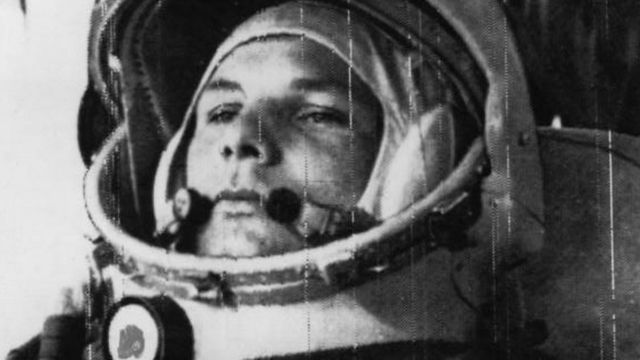
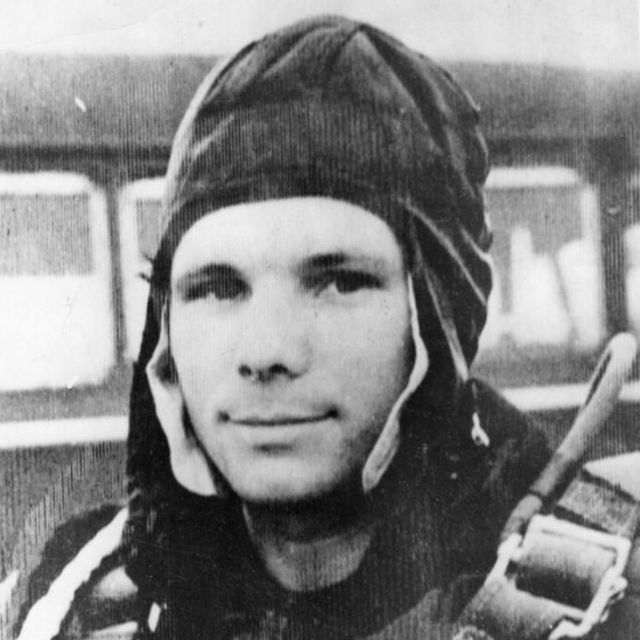

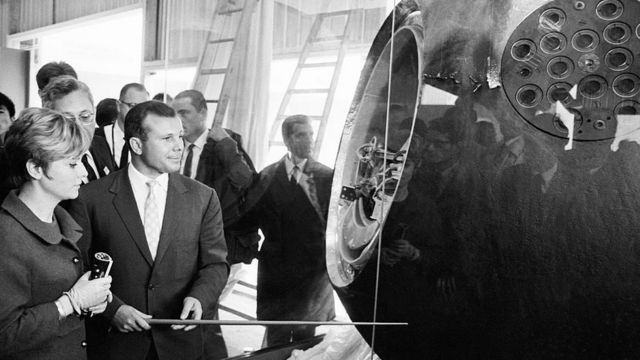

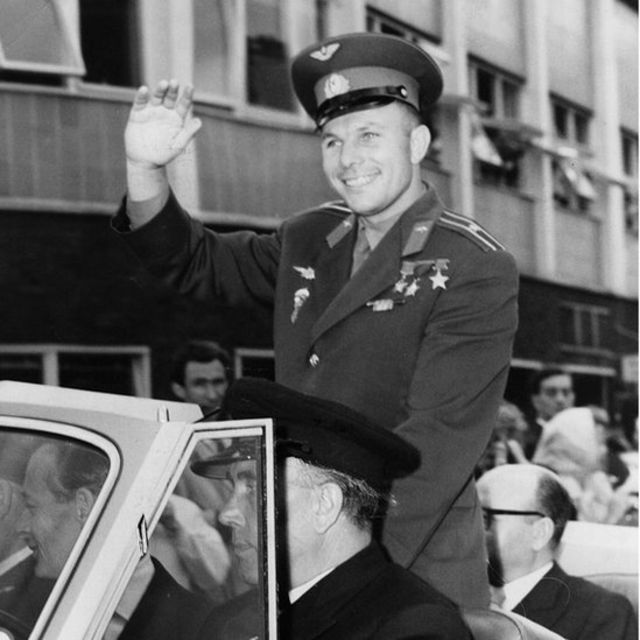
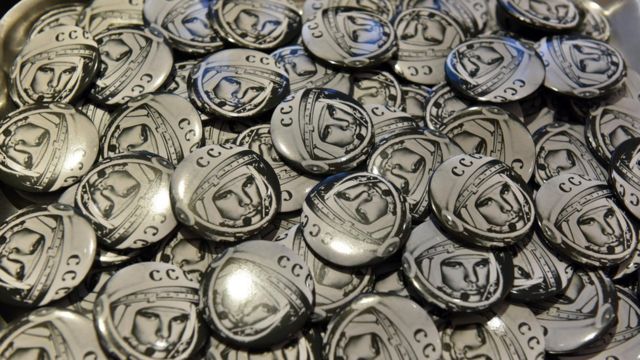
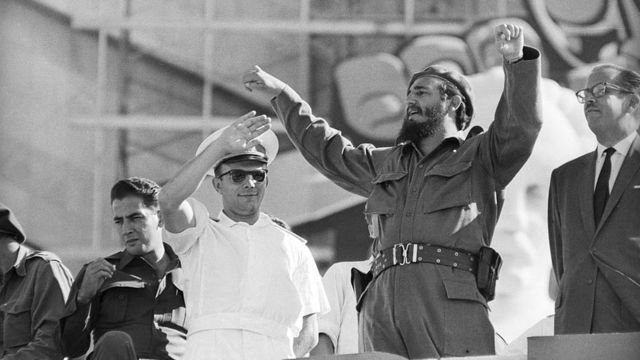

No comments:
Post a Comment